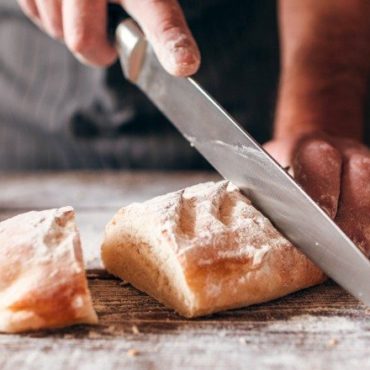And we’re back!! When it comes to cooking, baking, meal prep, lazy cleanup, and food storage, aluminum foil, parchment paper, and wax paper are ALL your BFFS. Even more so when you know which one to use when.
While some of their uses may overlap and all can make cooking easier, using the wrong type for the wrong activity can have pretty bad consequences. OOPS.
As usual, we’re here with all the useful deets so you know when, where, and why to use each. They are all awesome for a very easy clean-up which is truly why we give a sh*t.
So read on to learn about the differences and get some quick tips so you seem like you know what you are doing (even though you probably don’t).
Parchment Paper
Parchment is a brownish paper with a silicone coating that makes it heat-resistant and nonstick. HELLO, EASY CLEANUP! It’s great for lining baking pans of all shapes and sizes. Safe up to 420°F, it’s also great for roasting everything from fish to vegetables unless you plan to cook at a temperature above that (like 450°F to 500°F). Above 450°F don’t use parchment paper!
Most common uses:
- Covering counters during messier cooking steps
- Lining cake pans
- Lining cookie sheets
- Wrapping fish or other meat to cook
- Roasting vegetables (as long as the temperature is below 450°F)
- As a baker’s funnel to pipe icing onto cakes
Wax Paper
Wax paper has a wax coating that makes it great to prevent sticking. Used to cover counters when rolling out crusts or kneading bread, it can also be used to wrap food for cold storage and can even be used to line a pan when making an icebox dessert like fudge. Placing a piece of wax paper between things you want to freeze will stop them from sticking.
Most common uses:
- Lining pans for cold deserts like fudge
- Covering counters when rolling out pie crusts and dough
- Wrapping items for freezing
Aluminum Foil
Aluminum foil is super thin aluminum. It’s great for lining cooking dishes to make cleaning up easier. Some recipes may specify using aluminum foil to wrap items before placing them in the oven. This will help to lock in moisture and prevent dryness.
One little-known baker’s tip is to overlap two sheets of foil in the bottom of a baking pan using a cross pattern with the ends sticking out to make it easier to lift brownies and other gooey desserts out of the pan.
Most common uses:
- Wrapping meat or vegetables to lock in moisture
- Lining a grill or broiler pan to catch drips
- Wrapping sandwiches before heating or storage (yum)
- Wrapping meat for short-term freezing
- Lining a stove to prevent messes
- Balled up to scrub grill grates
Aluminum foil can also be reused and recycled so it’s the eco-friendly option, just be sure to rinse it before you put it into the trash.
One important thing to note is that while most foils have a shiny and dull side, you don’t really need to worry about which side is up unless you’re using nonstick foil, in which case you’ll want the food to sit on the dull side.
Quick Tips
When in doubt, remember this:
- Sweet treats on parchment sheets;
- Grill or broil on aluminum foil;
- Anything cold chills well with wax.
Know a thing or two about foil, parchment, or wax paper? Share your tips in the comments section below with us!



